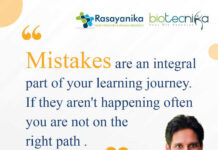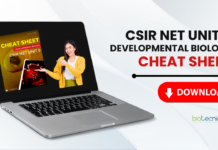Webinar Recap: Exploring Viral Nucleic Acid Extraction Tools for Advancing Infectious Disease Research
On November 13, 2024, over 1,000 researchers, scientists, and students from around the world gathered virtually for a webinar on “Viral Nucleic Acid Extraction Tools for Infectious Disease Research.” The event was a resounding success, shedding light on the critical role of viral nucleic acid extraction in tackling global health challenges.
The keynote speaker for the event was Dr. Aniket Bhattacharya, a renowned expert and Research Associate at Rutgers-Robert Wood Johnson Medical School, New Brunswick. Dr. Bhattacharya’s extensive research and practical experience in virology and molecular biology made him the ideal choice to lead this discussion. His reputation as a thought leader in the field attracted a diverse audience, including researchers, laboratory technicians, and students eager to deepen their understanding of viral nucleic acid extraction methods and their real-world applications.
Webinar Recap: Exploring Viral Nucleic Acid Extraction Tools for Advancing Infectious Disease Research
Why Viral Nucleic Acid Extraction Matters
The webinar opened with an overview of the importance of viral nucleic acid extraction in infectious disease research. Accurate extraction forms the foundation for obtaining high-quality results in molecular diagnostics, pathogen identification, and vaccine development. Dr. Bhattacharya emphasized
how breakthroughs in nucleic acid extraction technologies have transformed the way researchers approach infectious disease outbreaks, enabling faster and more reliable detection of pathogens.Understanding the Basics
Dr. Bhattacharya provided a detailed explanation of the basics of viral nucleic acid extraction, offering a comprehensive foundation for attendees. He outlined the fundamental principles of the process, which involves isolating viral DNA or RNA from various sample types. This step is critical in ensuring downstream processes like PCR, sequencing, and other molecular analyses yield accurate and reproducible results.
Diverse Types of Viral Nucleic Acids and Sample Types
One of the highlights of the talk was an engaging discussion on the different types of viral nucleic acids—DNA and RNA—and their unique characteristics. Dr. Bhattacharya elaborated on how the type of nucleic acid influences the choice of extraction method and the challenges associated with working with each.
He also addressed the diversity of sample types, including blood, saliva, nasal swabs, and tissue samples, emphasizing the importance of adapting protocols to suit the specific characteristics of each sample. This segment resonated deeply with clinical and diagnostic professionals in the audience who work with a wide range of specimen types in their laboratories.
Webinar Recap: Exploring Viral Nucleic Acid Extraction Tools for Advancing Infectious Disease Research
Manual vs. Automated Extraction Methods
Dr. Bhattacharya’s breakdown of manual and automated extraction methods was particularly well-received. While manual methods remain cost-effective and widely used in resource-limited settings, automated systems have revolutionized laboratories with their efficiency, consistency, and reduced risk of contamination. Attendees were guided through the advantages and limitations of each approach, enabling them to make informed decisions based on their research needs and resources.
Latest Tools and Kits for Viral Extraction
The session also showcased the latest tools and kits for viral nucleic acid extraction, which have been developed to meet the growing demand for faster, more accurate diagnostics. Dr. Bhattacharya reviewed state-of-the-art technologies, highlighting their applications in both academic research and clinical settings.
Applications in Infectious Disease Research
The webinar concluded with an exploration of real-world applications of viral nucleic acid extraction techniques in infectious disease research. From tracking viral outbreaks like COVID-19 to developing vaccines for emerging pathogens, these techniques are pivotal in shaping the future of global health. Dr. Bhattacharya illustrated these applications with case studies, demonstrating how advanced nucleic acid extraction tools have enabled groundbreaking discoveries and public health interventions.
Engagement and Insights
The interactive nature of the webinar allowed attendees to engage with Dr. Bhattacharya through a robust Q&A session. Participants posed insightful questions about troubleshooting common challenges in nucleic acid extraction, selecting the best tools for specific applications, and the future of automation in molecular diagnostics.
Who Attended and Why It Mattered
The webinar attracted a broad audience, including:
- Researchers and scientists specializing in virology, microbiology, and infectious diseases
- Laboratory technicians seeking to refine their skills in clinical diagnostics
- Students and postgraduates eager to expand their knowledge in molecular biology and biotechnology
For many attendees, the webinar was a rare opportunity to learn from a global expert and gain practical insights into a critical aspect of infectious disease research.
Key Takeaways
The webinar provided attendees with a wealth of knowledge, including:
- A deeper understanding of the principles and importance of viral nucleic acid extraction
- Insights into the latest tools, kits, and technologies available for efficient extraction
- Practical advice on selecting the right methods and tools for diverse applications
- A vision for how these techniques are shaping the future of infectious disease research
Webinar Recap: Exploring Viral Nucleic Acid Extraction Tools for Advancing Infectious Disease Research
Final Thoughts
The overwhelming participation of more than 1,000 individuals underscored the growing interest in and importance of this field. Dr. Aniket Bhattacharya’s expertise and engaging presentation style made the webinar a valuable experience for all attendees, providing them with actionable insights and sparking new ideas for their research and professional endeavors.
This webinar was not just a lecture but a collaborative learning experience, bridging gaps between academic research and clinical applications. For those who missed it, the recording is available upon request, ensuring that the knowledge shared continues to benefit the scientific community.
Stay tuned for more such insightful webinars as we continue to bring experts from around the globe to advance the frontiers of science!






























